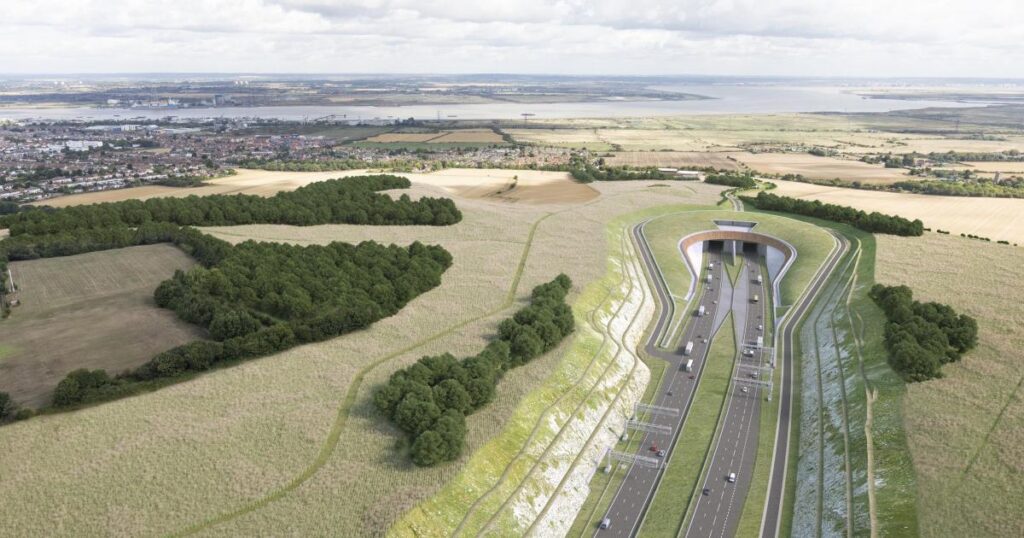The pictures, released by National Highways, show how low-carbon construction and nature are key to the design of the new road, which links Kent and Essex.
The project aims to drive growth by easing congestion at the Dartford Crossing and providing a new link between the ports of the south-east, the Midlands, and the North.
It includes 14.3 miles of new road and a 2.6-mile twin-bore tunnel beneath the River Thames, which will be Britain’s longest road tunnel.
The Lower Thames Crossing has been designed to be Britain’s greenest road, using new approaches to road design and construction to cut carbon emissions and restore nature.
The project will create six times more green space than road, including one million new trees, a new community woodland, two new public parks, and seven green bridges.
These bridges will blend the road into the landscape and connect local communities to the countryside.
The newly released images showcase how this innovative approach is influencing the road’s design and feel.

These innovative bridges, designed by Arup and Sean Harrington Architects, could be used across the country to create safer, greener crossings.

The project also features pre-fabricated bridges, built in an offsite facility using low-carbon methods.

The images also show that 80 per cent of the route will be in a tunnel or hidden behind landscaped embankments and mounds, helping it blend into the countryside and green spaces.
New slimline gantry designs are also part of the project.

These use less steel and concrete to reduce visual impact and cut carbon while maintaining strength and durability.
The project, which received planning permission from the government in March following years of consultation and design development, will be showcased at a series of community events in Kent, Essex, and Havering, starting tomorrow.
Visitors will be able to speak to the team building the new road and learn when and where upcoming surveys and enabling works will take place.
The main construction work could start as early as 2026, with the road opening in the early 2030s.
Events will take place in Kent, including at Gravesend Town Centre on Saturday, June 14 from 11am to 5pm, Dartford Town Centre on Friday, June 20 from 10am to 5pm, and Hempstead Valley Shopping Centre, Gillingham on Tuesday, June 24 from 10am to 6.30pm.
National Highways is the government-owned company responsible for modernising, maintaining, and operating England’s motorways and major A roads.
Real-time traffic information for England’s motorways and major A roads is available via its website, local and national radio travel bulletins, electronic road signs, and mobile apps.




